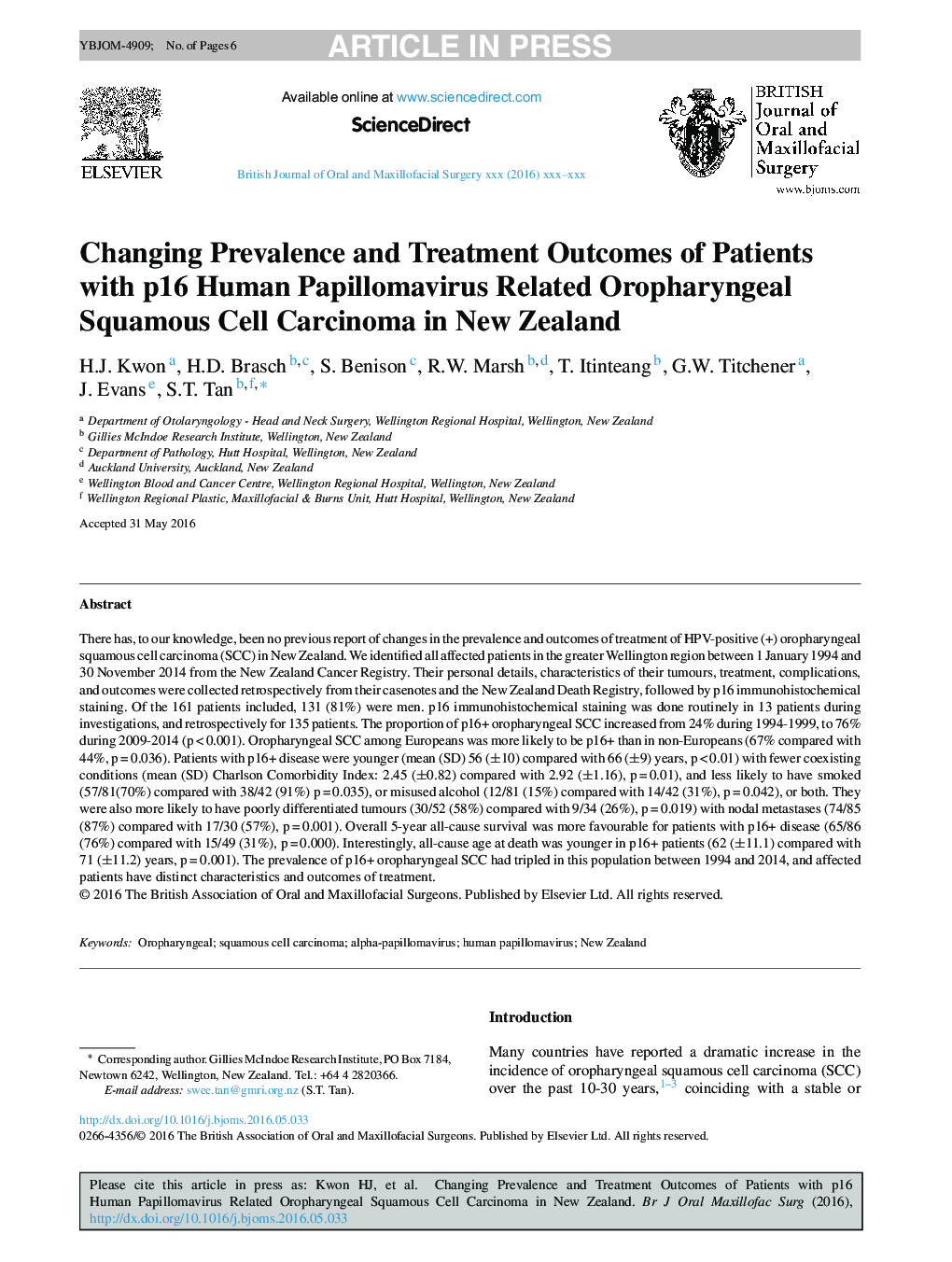| Article ID | Journal | Published Year | Pages | File Type |
|---|---|---|---|---|
| 5638664 | British Journal of Oral and Maxillofacial Surgery | 2016 | 6 Pages |
Abstract
There has, to our knowledge, been no previous report of changes in the prevalence and outcomes of treatment of HPV-positive (+) oropharyngeal squamous cell carcinoma (SCC) in New Zealand. We identified all affected patients in the greater Wellington region between 1 January 1994 and 30 November 2014 from the New Zealand Cancer Registry. Their personal details, characteristics of their tumours, treatment, complications, and outcomes were collected retrospectively from their casenotes and the New Zealand Death Registry, followed by p16 immunohistochemical staining. Of the 161 patients included, 131 (81%) were men. p16 immunohistochemical staining was done routinely in 13 patients during investigations, and retrospectively for 135 patients. The proportion of p16+ oropharyngeal SCC increased from 24% during 1994-1999, to 76% during 2009-2014 (p < 0.001). Oropharyngeal SCC among Europeans was more likely to be p16+ than in non-Europeans (67% compared with 44%, p = 0.036). Patients with p16+ disease were younger (mean (SD) 56 (10) compared with 66 (9) years, p < 0.01) with fewer coexisting conditions (mean (SD) Charlson Comorbidity Index: 2.45 (0.82) compared with 2.92 (1.16), p = 0.01), and less likely to have smoked (57/81(70%) compared with 38/42 (91%) p = 0.035), or misused alcohol (12/81 (15%) compared with 14/42 (31%), p = 0.042), or both. They were also more likely to have poorly differentiated tumours (30/52 (58%) compared with 9/34 (26%), p = 0.019) with nodal metastases (74/85 (87%) compared with 17/30 (57%), p = 0.001). Overall 5-year all-cause survival was more favourable for patients with p16+ disease (65/86 (76%) compared with 15/49 (31%), p = 0.000). Interestingly, all-cause age at death was younger in p16+ patients (62 (11.1) compared with 71 (11.2) years, p = 0.001). The prevalence of p16+ oropharyngeal SCC had tripled in this population between 1994 and 2014, and affected patients have distinct characteristics and outcomes of treatment.
Related Topics
Health Sciences
Medicine and Dentistry
Dentistry, Oral Surgery and Medicine
Authors
H.J. Kwon, H.D. Brasch, S. Benison, R.W. Marsh, T. Itinteang, G.W. Titchener, J. Evans, S.T. Tan,
